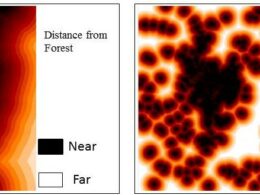- Land use/land cover map based on mapping different categories such as water, forest, range land, urban etc.
- Mappingand quantification of surface water bodies/ water resources.
- Geological map based on identification of landforms, rock types, folds, faults and fractures.
- Urban change detection maps using multi date remote sensing data.
- Assign objects to classes
- Detection, recognition, identification.
- Interpreter confidence is ranked as possible, probable
Uses image scale to derive measurements such as length with distance and volume
Demarcation of regions
Conversion of information into the thematic maps
Image reading corresponds to simply identification of objects on satellite image using elements/keys of image interpretation.
Image measurements include extraction of quantitative properties such as length, location, height, density etc from satellite images.
Image analysis, involves comparative analysis of interpreted information to actual phenomenon of satellite image/ground and also evaluate the condition of objects on the satellite image.
The outcome of image reading, image measurement and image analysis will be a interpreted map, which may be representing a specific theme.
Elements/Keys of image interpretation
- Size
- Shape
- Shadow
- Tone/Color
- Texture
- Pattern
- Height & depth
- Site/Situation
- Association
The above elements/keys of image interpretation used for identification and recognize of objects on remote sensing data.
